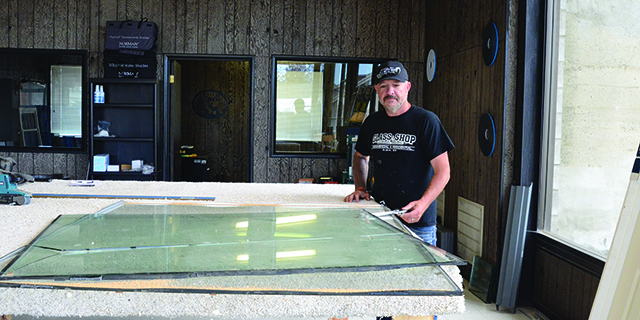Wintertime closures of Interstate 84 on rise in Eastern Oregon
Published 12:00 pm Friday, December 16, 2022

- Winter 2021-22 long term closures.png
PENDLETON — During the 2021-22 winter season, Interstate 84 in Eastern Oregon shut down for two hours or longer more than three times as often than in the previous year.
According to data from the Oregon Department of Transportation, “long-term closures” on I-84 between Pendleton and Ontario spiked from 11 shutdowns in 2020-21 to more than 30 the next season.
Trending
“We had about 35 closures last year, all told; five were rollover crashes where someone might have been driving too fast or were distracted and went off the road,” ODOT Region 5 area manager Ken Patterson said. “One closure was due to a truck catching fire. The other 29 closures were caused by unchained vehicles.”
ODOT for the data collection counted every individual “event,” revealing there is not only a spike in closures but also in crashes, jackknifed semitrailers and similar causes. Some happened simultaneously, so several events in a single closure are common.
Crashes and winter conditions closing the freeway in Eastern Oregon even occurred in April this year. Patterson said the department began collecting data about the closures in October 2020 to find out what was causing the increase.
“A couple of things are happening there,” he said. “One is, we found we are experiencing a trend where there are more closures, even though the weather is not changing that much. Unlike other parts of the state, this is a primary route; when it closes, it has about a $50,000-an-hour impact to industry, so we’re trying to do what we can to minimize that because it adds up to be a pretty significant number. So, this last year we thought, ‘Let’s be intentional about this.’”
The longest closure in the winter of 2020-21 was 10 hours, 31 minutes on Feb. 26, 2021, due to a jackknifed semi on the eastbound side near milepost 256. The longest closure last winter lasted 19 hours, 28 minutes, when a hazardous material tanker crashed Feb. 10 near westbound mile point 219.5.
Chain up, trucksIn compiling the data, ODOT observed several trends, but one issue stood out: truck drivers who don’t chain up their rigs.
Trending
“We noticed that we used to have a lot more local drivers when we had a timber industry, and a lot more local route drivers,” Patterson said. “They knew the conditions and they knew when to chain up, they complied. Now, you have more people traversing Interstate 84 just trying to get from A to B. They may be under pressure to get where they’re going, they may not be from a part of the United States that’s familiar with this kind of winter weather, so they’re not aware of the importance of chains.”
ODOT estimates about 9,800 vehicles traverse I-84 between Pendleton and La Grande every day, and almost 50% of them are semitrailers.
The sheer size and weight of semis can pose multiple dangers to other drivers when unchained in the wintertime. A crash itself poses a danger, but Patterson said the big trucks are often 75 feet or longer, so after they’ve crashed, they can take up quite a bit of the road and create a dangerous blockage for other drivers.
“That’s a serious issue for us,” he said. “We’ve worked with the Oregon Legislature to implement a higher fine because previously the fine for not chaining up was too low. It was just a good business decision not to chain up, which can be a pretty good bet you can make because Oregon State Police is also having their staff shortages and they can’t be everywhere all the time.”
The Legislature increased the fine for not putting on chains to $800. But Patterson said even with the higher fine in effect last year, I-84 still had a high number of closures due to unchained commercial vehicles.
Chaining up a semi can be a time-consuming endeavor, one that ODOT is sympathetic to and has committed itself to facilitating.
“An experienced semi-truck driver can safely install chains in about 20 to 30 minutes,” Patterson said. “The chains are very heavy, so you know, drivers may have a bad back. It’s just not very convenient for them to chain up. So we’ve done a number of things over the years to make it more convenient to chain.”
Police presenceODOT built additional chain-up areas to provide more locations for drivers to pull into and put in road weather information to advise of weather conditions
“If someone heading to La Grande sees those conditions and sees a chain condition is in effect, they can just pull over in Pendleton and wait it out if they want to,” Patterson said. “It’s a continual challenge to get vehicles chained up in a timely manner.”
ODOT had experimented with sections of heated road to help combat ice build-up and reduce risk on the road, but Patterson said that due to new deicing technology, the department removed such heating systems and is not considering the installation of more in the future.
“I don’t think you’ll see a heated road,” he said “What we’re working towards is we’ve got a chain-up area improvement that we’re making at the 216 interchange and put in a chain-sorting area so we’re able to enforce the chain conditions more effectively.”
Patterson said ODOT has observed a significant rise in chain compliance when drivers know police enforce chain rules at a distinct location.
“The compliance goes way up because word gets out on the radio,” he said. “Truck drivers know that they can’t really gamble and take the chance to make it across. So that sorting area is going to take unchained trucks off the interstate, off the mountain.”
ODOT will continue to compile data on Interstate 84 closures to track what the trends are and identify where best to invest in the future and where to put educational campaigns to try to improve safety for everyone.
“A great take-home message is that people just need to know the condition that they’re in when they’re driving, whether it’s the speed they are going, or if they are drowsy or distracted, and proceed accordingly,” Patterson continued. “Use available data to drive safely.”









